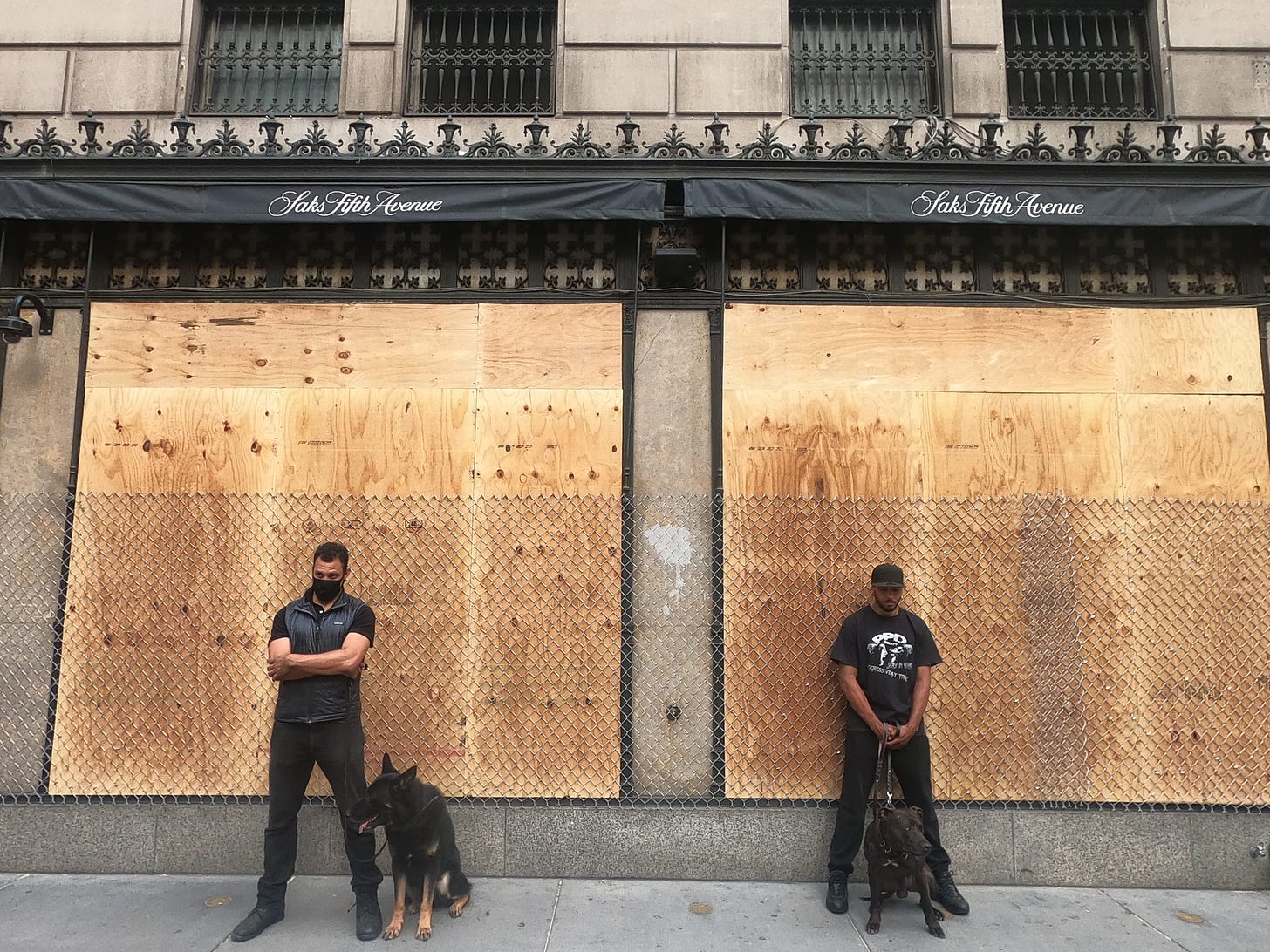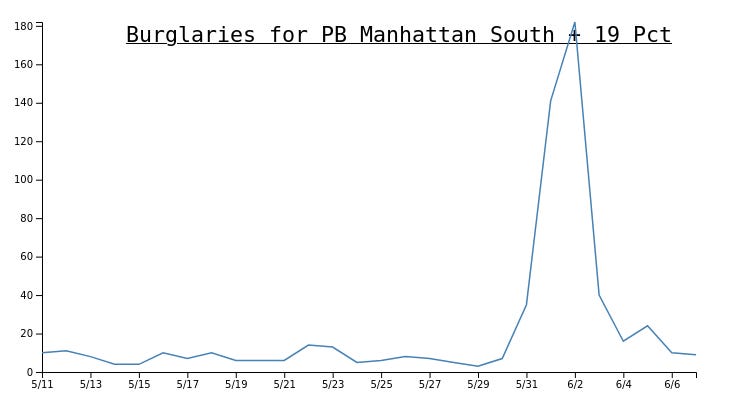Two Night of Riots Quantified, NYPD Crime Data Illuminates Some Aspects of the Riots
NYPD crime statistics reveal scale of riots, which were largest mass crime event since 1977 blackout
Last week was an unprecedented week in an unprecedented year for New York City. Amid the backdrop of an economy shuttered by a global pandemic – 20 thousand New Yorkers killed by disease – Manhattan experienced two nights of large-scale riots, perhaps for the first time in fifty years, as the nation dealt with widespread civil unrest at the police murder of George Floyd in Minneapolis.
The riots were so disturbing to city officials that after the first night, May 31, the mayor instituted an 11 PM curfew – the first time a curfew was imposed on the city since World War Two. When the curfew failed to prevent riots the following night, the mayor extended the order for the rest of the week and earlied the curfew time to 8 PM. The most difficult week of Bill de Blasio's tenure went down in history.
But While the two nights of riots are still controversial and shrouded in mystery, as of yesterday, when the NYPD released the crime statistics covering those dates, we finally have data to quantify some of the basic facts that will hopefully illuminate our understanding of the riots.
According to the data, Manhattan South – which is Manhattan south of Central Park – was the epicenter of the riots for both nights. On Sunday night the riots were concentrated below 14th Street, where 105 burglaries were recorded after midnight, the highest burglary numbers coming out of SoHo. The following night – the first night of the curfew – the riots were concentrated in lower midtown between 29th and 45th Streets between Ninth and Lexington Avenues, 132 burglaries being recorded north of 14th Street. The second night of rioting was distinct in that the looting spread outside of Manhattan South – the Upper East Side experiencing 25 burglaries south of 96th Street – as well as into the Bronx.
Tuesday also saw isolated looting, but did not reach the levels of the previous nights' full-blown riots, as the data and anecdotal reports make clear.
In terms of burglary counts, the second night of rioting was larger than the first night. In Manhattan South there were 139 burglaries reported for the calendar date of June the first. For the second of June that number increased slightly to 157. The Bronx, having skipped the first night of rioting, reported only 6 burglaries on the first, but exploded on the second night when 114 burglaries were reported.
Because the calendar days of the NYPD statistics begin at midnight, it creates a fragmented account of each day and night. From the statistics, it's ambiguous at times if a burglary occurred on the first or the second night of rioting. But if the entire four-day period bounding these two nights is looked at as a whole, the combined extent of the riots becomes abundantly clear.
For the four days starting Sunday morning and ending Wednesday evening, Manhattan South recorded 367 burglaries. That is up more than 15-fold from 24 burglaries for the same period the previous week, and 26 the week before that. The Bronx recorded 187 burglaries, up five-fold from 35 the previous week, and up 11-fold from 17 the week before that. City-wide, the burglary levels were 4.75 times higher for these days than in the previous week.
Put into another perspective, more burglaries were committed in these four days in the city than were committed in the previous 20 days combined.
No other boroughs than Manhattan and the Bronx experienced any statistically significant increase in burglary. In the days after the riots, the burglary levels tapered off to their usual amounts
Aside from burglary, there did not appear to be any statistically significant increase in any other report category.
While the extent of the looting during the riots has been made more clear, the police reports fail to describe the full spectrum of disorder that the riot inflicted. It is still not clear what the total value of looted goods was worth nor how much losses were sustained from property damage. The reports do not discuss vandalism of public property nor fires set to trash cans or vehicles. We'll have to wait for more data from more agencies for that. But it appears at least that the rioting was the single biggest crime event in the city since the 1977 blackout.
That is, in terms of blue-collar crime, anyway.
Coming soon: the original interactive crime map that accompanied this article before it was moved to Substack
Photo by John Bolger




